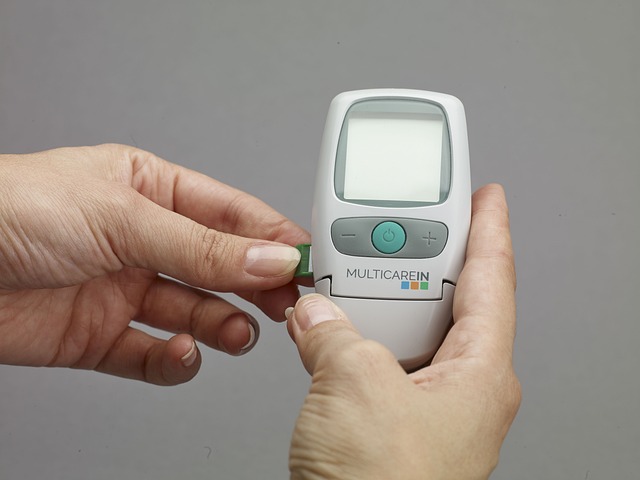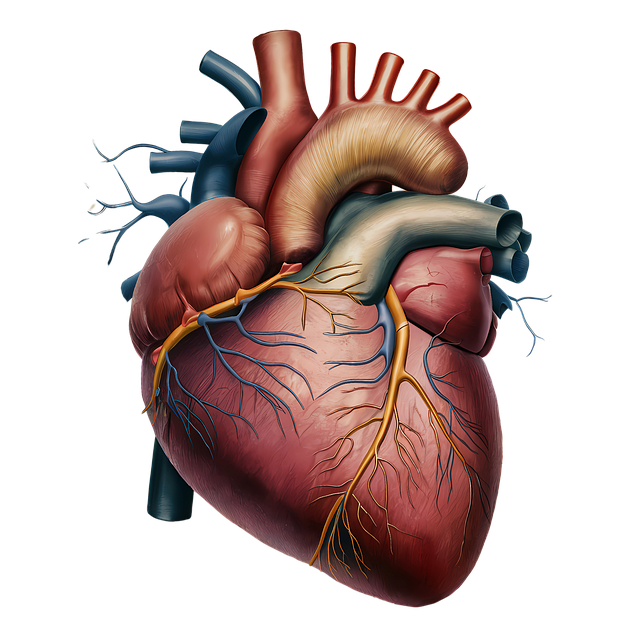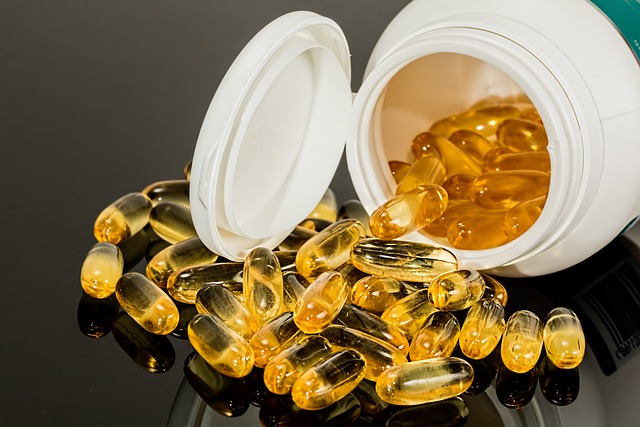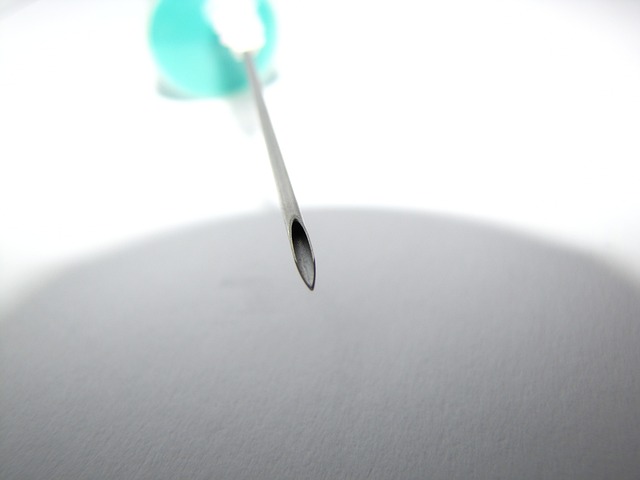In the UK, medical device manufacturers must comply with MHRA regulations through accurate translations of manual content. Specialized translation services are vital to ensure safety and effective device use, requiring linguistic expertise and deep medical knowledge. These services adhere to MHRA guidelines, maintain clarity, and stay updated on regulatory changes. Choosing a reliable provider ensures compliance, clear communication, and precise technical term translation. Accurate manuals enhance patient safety and facilitate devices' successful integration into UK healthcare settings. Future advancements in AI and localization technologies will further improve these services, ensuring accessible and effective device manuals for diverse users.
“In the UK healthcare sector, ensuring compliance with stringent regulations is paramount. When it comes to medical device manuals, accurate translations are not just desirable—they’re non-negotiable. This comprehensive guide delves into the intricacies of translating device manuals to meet UK standards. From understanding regulatory requirements to selecting the right translation service, we explore best practices and future trends. Discover how high-quality translations can enhance patient safety and streamline healthcare operations in the UK market. Explore essential strategies for effective communication through professional medical device manual localization services.”
- Understanding UK Healthcare Regulations for Medical Devices
- The Role of Accurate Device Manual Translations
- Challenges in Translating Medical Device Literature
- Best Practices for Ensuring Quality and Compliance
- Choosing the Right Translation Service Provider
- Key Considerations for Effective Communication
- Technical Aspects of Medical Device Manuals
- Legal Implications of Inaccurate Translations
- Case Studies: Successful Translation Projects
- Future Trends in Medical Device Localization
Understanding UK Healthcare Regulations for Medical Devices

In the UK, medical device manufacturers and importers must comply with stringent regulations to ensure patient safety and the effective functioning of healthcare systems. These regulations are designed to cover all aspects of a medical device’s lifecycle, from design and manufacturing to distribution and post-market surveillance. The main governing body responsible for these standards is the Medicines and Healthcare products Regulatory Agency (MHRA). When it comes to translation services for medical device manuals, understanding and adhering to these UK healthcare regulations are paramount.
Translation accuracy is critical in this sector as any errors or ambiguities could have severe consequences. Medical device manuals must be translated with precision, ensuring that technical terms and instructions remain intact and are culturally adapted for the target audience. Translation service providers specializing in medical devices should have a deep understanding of both healthcare terminology and UK regulatory requirements to deliver accurate and compliant translations, thereby facilitating the safe and effective use of these devices within the British healthcare system.
The Role of Accurate Device Manual Translations

In the UK healthcare sector, ensuring clear and precise communication is paramount. Accurate translations of medical device manuals play a vital role in this regard. When introducing a new device into the market, providing user manuals in both English and other relevant languages is essential for compliance with regulations set by bodies like the Medicines and Healthcare products Regulatory Agency (MHRA).
Translation services for Medical Device Manuals UK must not only capture the technical nuances of the original content but also convey critical safety information, instructions, and potential risks. Professional translators with expertise in medical terminology are key to avoiding misinterpretations that could lead to adverse events. This meticulous process guarantees that healthcare professionals and patients alike can rely on the instructions provided, ultimately enhancing patient safety and the successful integration of these devices into UK healthcare settings.
Challenges in Translating Medical Device Literature

Translating medical device manuals for compliance with UK healthcare regulations presents a unique set of challenges. One of the primary hurdles is ensuring precision and accuracy in technical terminology, as any misinterpretation could lead to severe consequences in patient safety. Medical devices often have complex specifications and instructions, requiring translators to possess not just linguistic proficiency but also a deep understanding of medical science and regulatory guidelines like MHRA (Medicine and Healthcare products Regulatory Agency) standards.
Additionally, maintaining the original manual’s clarity and user-friendliness is crucial. The translation must be easily comprehensible for healthcare professionals while adhering to UK language conventions and cultural nuances. This involves careful consideration of sentence structure, terminology, and even layout adjustments to ensure the translated manual remains practical and accessible. Moreover, staying up-to-date with frequent regulatory changes in the healthcare sector poses another challenge, necessitating ongoing collaboration between manufacturers, translators, and regulatory bodies to deliver compliant translations for medical device manuals within the UK market.
Best Practices for Ensuring Quality and Compliance

When translating medical device manuals for the UK market, adhering to stringent healthcare regulations is paramount. It’s crucial to engage professional translation services with deep expertise in both language and medicine. They should follow best practices like using qualified translators who are native speakers, ensuring terminology consistency through industry-specific glossaries, and performing thorough reviews at every stage of the translation process.
Additionally, compliance with guidelines from bodies like the MHRA (Medicines and Healthcare products Regulatory Agency) is essential. This involves not only accurate rendering of medical content but also adapting it to UK healthcare contexts, including any local terminology variations and specific clinical practices. Regular quality assurance checks and feedback loops are vital to guarantee that the translated manuals meet all necessary standards, thereby facilitating safe and effective device use within the UK healthcare system.
Choosing the Right Translation Service Provider

When it comes to translating device manuals for healthcare regulations in the UK, selecting a reputable and experienced translation service provider is paramount. Look for companies that specialise in medical device translations, ensuring they have a deep understanding of industry-specific terminology and terminology variations across languages. This expertise guarantees accurate and compliant documentation.
Reputable providers should offer a range of services including localisation, cultural adaptation, and technical precision. They must adhere to UK healthcare standards and regulations, such as the Medicines and Healthcare products Regulatory Agency (MHRA) guidelines. Verification and quality assurance processes are essential to ensure the translated manuals meet the highest accuracy standards. Choose a service that provides transparent communication, clear project timelines, and options for feedback and revisions to meet your specific needs for translation services for medical device manuals UK.
Key Considerations for Effective Communication

When translating device manuals for the UK healthcare sector, several key considerations come into play to ensure effective communication and compliance with regulations. Medical device manufacturers must adhere to strict guidelines to provide clear and accurate instructions in a patient-centric manner. This involves employing professional translation services that understand the nuances of medical terminology and regulatory requirements unique to the UK market.
Effective communication requires translating manuals not just word for word but also adapting content to suit local cultural contexts and healthcare practices. It’s crucial to engage translators with expertise in both languages and medical fields, ensuring that technical terms are translated accurately without losing their intended meaning. Moreover, maintaining consistency across various device models and keeping up with regulatory updates are essential to providing comprehensive and compliant user guides for UK healthcare professionals.
Technical Aspects of Medical Device Manuals

The technical aspects of medical device manuals are crucial in ensuring compliance with UK healthcare regulations. These manuals, often complex and detailed, require a deep understanding of both the device’s functionality and the regulatory landscape. Translation services for Medical Device Manuals UK must therefore go beyond simple word-for-word translation. They need to ensure that all technical terms and specifications accurately convey the same meaning in the target language, while adhering to local terminology standards.
Accurate translations must also account for variations in medical practices and regulations between countries. This involves not just translating text but also localizing content to reflect the UK’s healthcare environment. Specialized translation services employ medical professionals and linguists who are adept at navigating these complexities, ensuring that the translated manuals remain effective, precise, and legally compliant.
Legal Implications of Inaccurate Translations

Inaccurate translations of medical device manuals can have severe legal implications in the UK healthcare sector, where regulatory compliance is paramount. If a translated manual fails to convey the correct information or introduces ambiguities, it may lead to serious consequences for both manufacturers and healthcare providers. The Medicines and Healthcare products Regulatory Agency (MHRA) strictly enforces regulations ensuring that all medical devices meet safety standards and provide clear instructions for users. Any discrepancies in the translated manual could result in non-compliance, leading to potential legal repercussions, including fines or product recalls.
Translation services for Medical Device Manuals UK must therefore employ qualified linguists with expertise in both the source and target languages, coupled with a deep understanding of medical terminology. This meticulous approach ensures that instructions are not only accurate but also accessible to healthcare professionals who rely on these manuals for patient safety.
Case Studies: Successful Translation Projects

In the realm of healthcare, accurate and compliant translation services for medical device manuals are paramount. Case studies highlight successful projects where translation expertise has facilitated the UK market entry of innovative devices. One notable example involves a global medical technology company launching its cutting-edge diagnostic equipment in the UK. The challenge lay in translating intricate user manuals while adhering to strict regulatory guidelines, such as those set by the Medicines and Healthcare products Regulatory Agency (MHRA). A specialist translation service was engaged, ensuring every technical term and instruction was conveyed precisely in British English.
This project exemplifies effective collaboration between device manufacturers, language experts, and UK healthcare regulators. The result? A seamless user experience for medical professionals and patients alike. As the demand for global medical device distribution continues to grow, so does the need for high-quality translation services tailored to meet UK regulations. Translation services for Medical Device Manuals UK must demonstrate a profound understanding of both language and local healthcare requirements to foster safe and efficient patient care.
Future Trends in Medical Device Localization

The future of medical device localization is set to be shaped by several emerging trends, all aimed at enhancing patient safety and care in the UK healthcare system. With advancements in technology, translation services for medical device manuals are evolving beyond simple word-for-word interpretations. Machine translation tools are becoming increasingly sophisticated, leveraging AI and neural networks to deliver more accurate and contextually relevant translations. This not only speeds up the localization process but also ensures consistency across multiple languages.
Additionally, there’s a growing emphasis on localisation going beyond text. This includes adapting user interfaces, incorporating cultural nuances, and even voice-based localisations for medical devices with interactive features. As the UK healthcare sector continues to embrace digital transformation, translation services will play a pivotal role in ensuring that medical device manuals are accessible and understandable for a diverse range of users, thus facilitating safer and more effective patient treatment.
When it comes to medical device manuals, accurate translations are not just desirable—they’re legally mandated in the UK. Navigating complex regulations requires a deep understanding of both healthcare standards and the specific nuances of each device. Choosing the right translation service provider is crucial to ensuring compliance and effective communication. By adhering to best practices and considering technical aspects, healthcare manufacturers can meet UK requirements and avoid potential legal pitfalls. In an era of rapid technological advancement, embracing future trends in medical device localization will only enhance patient safety and care.
